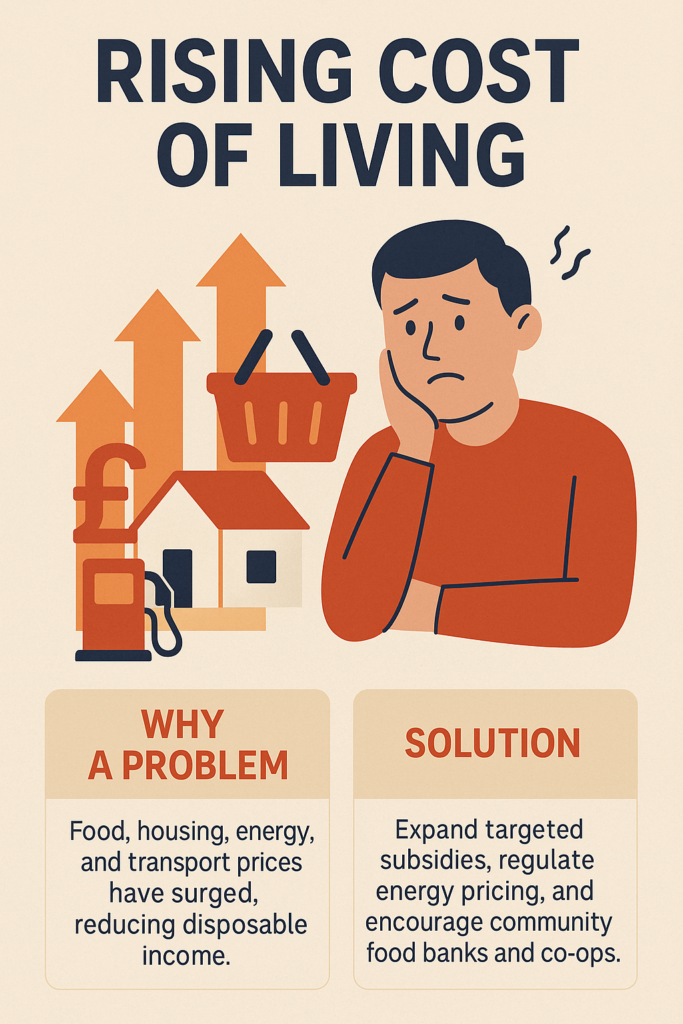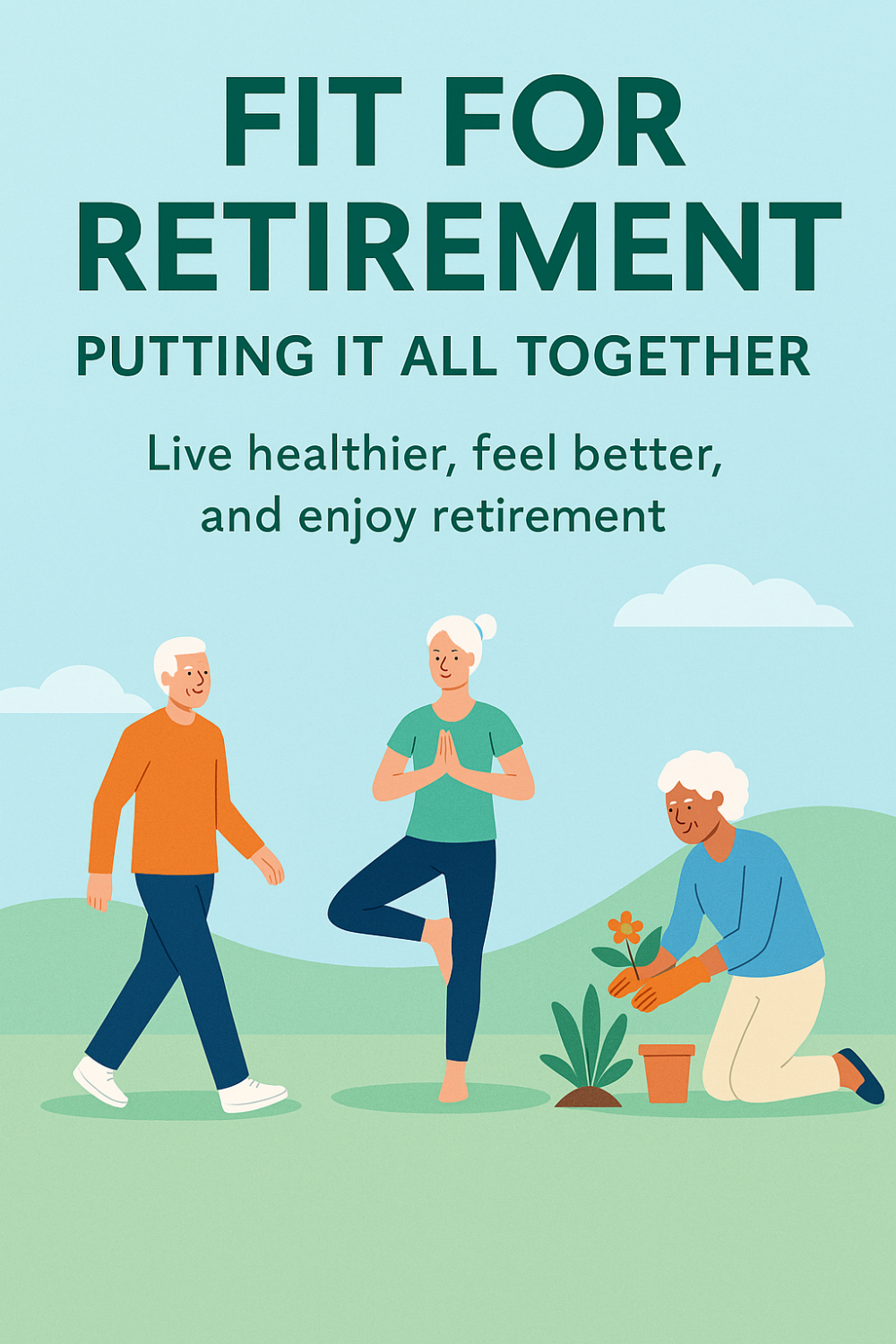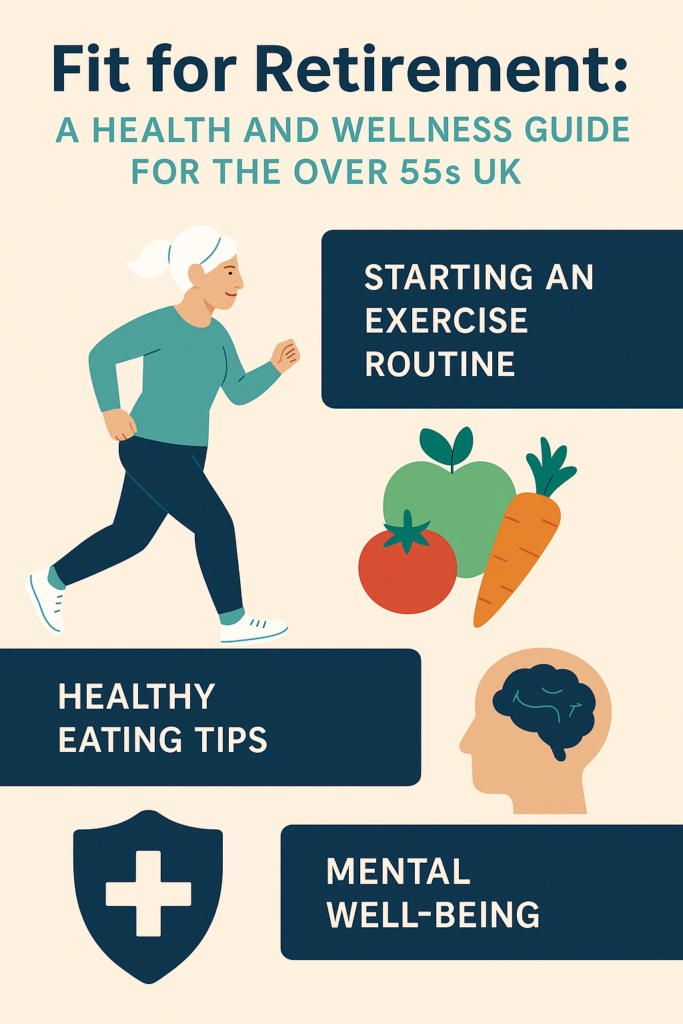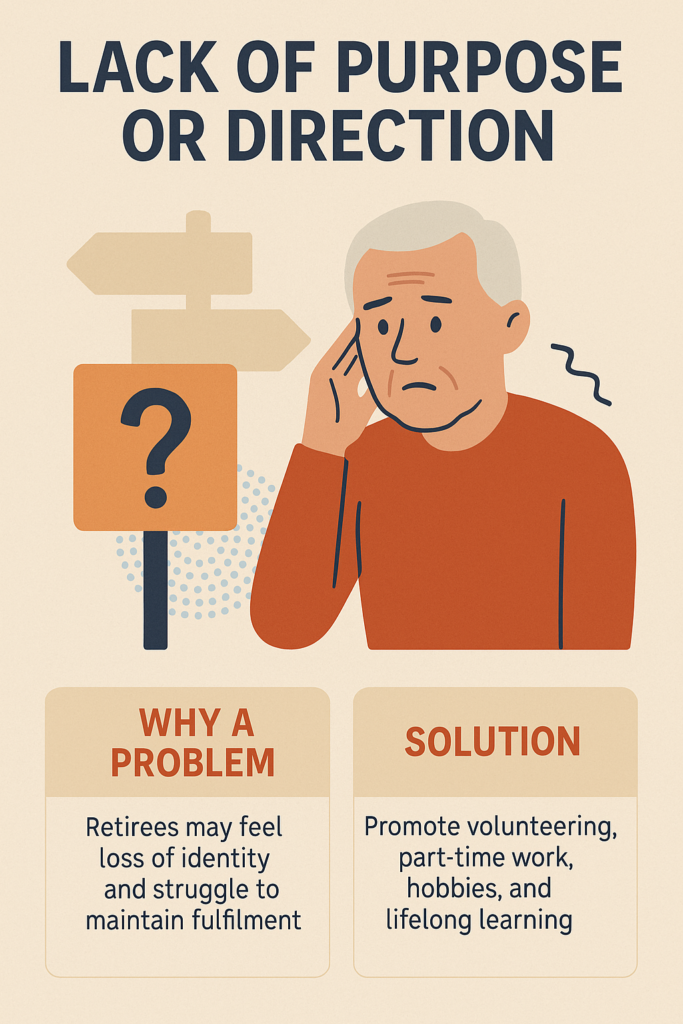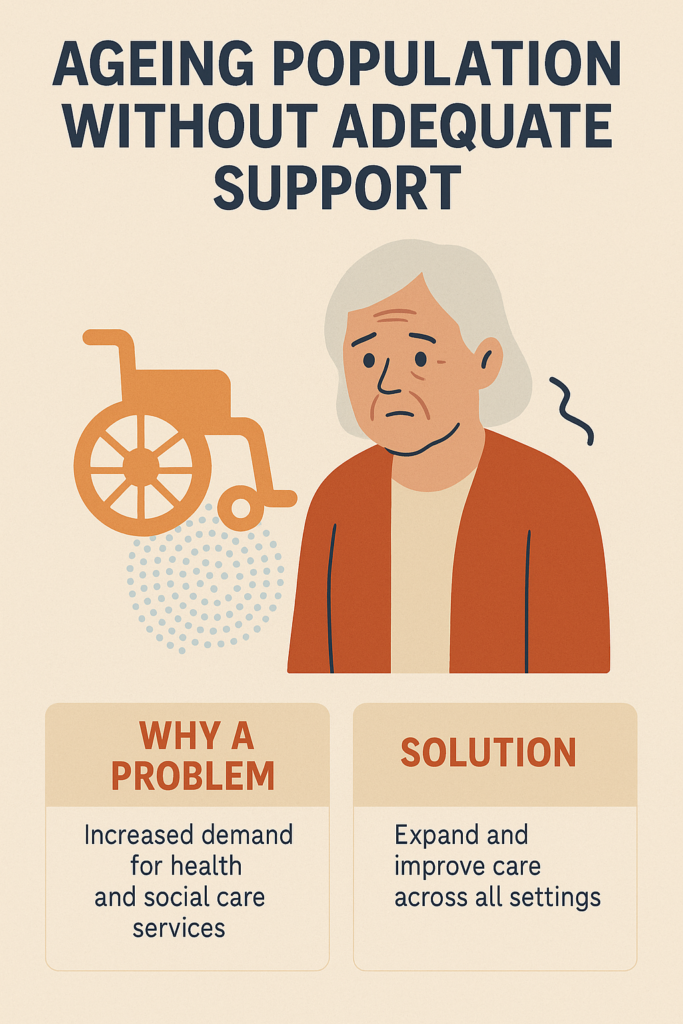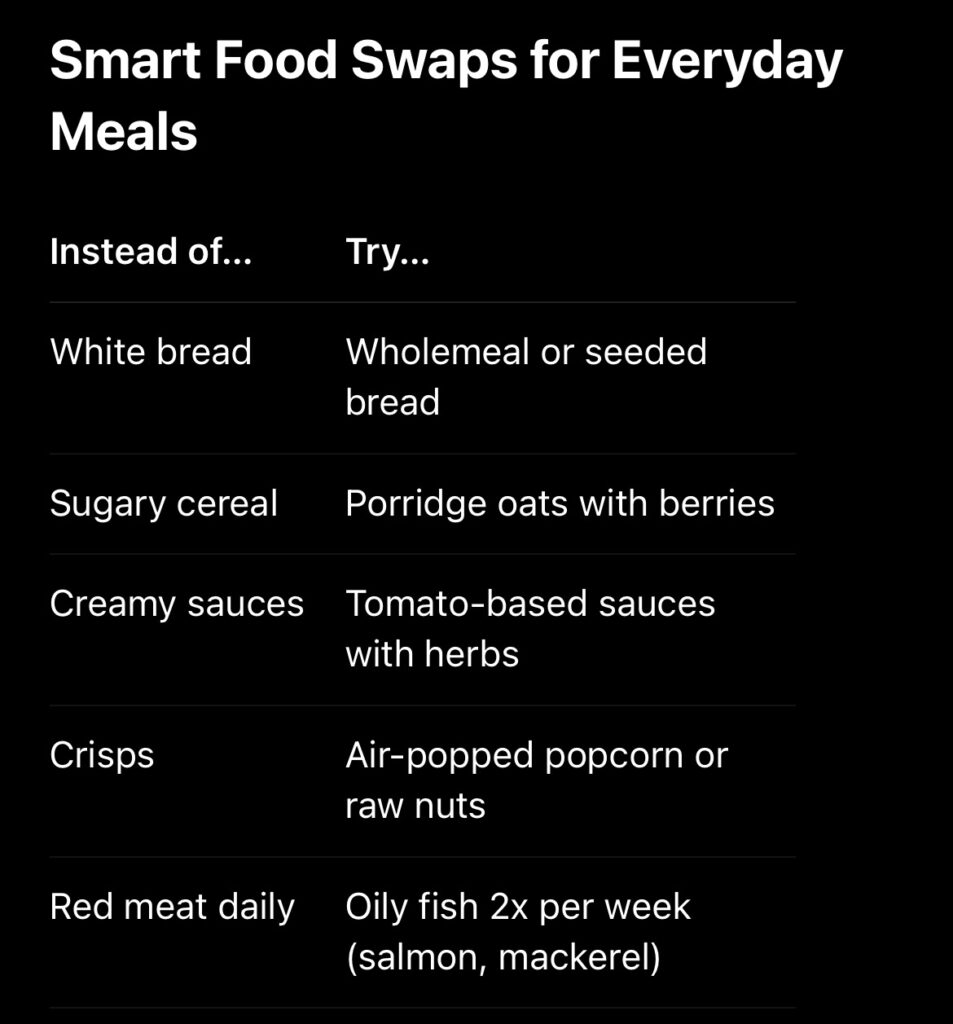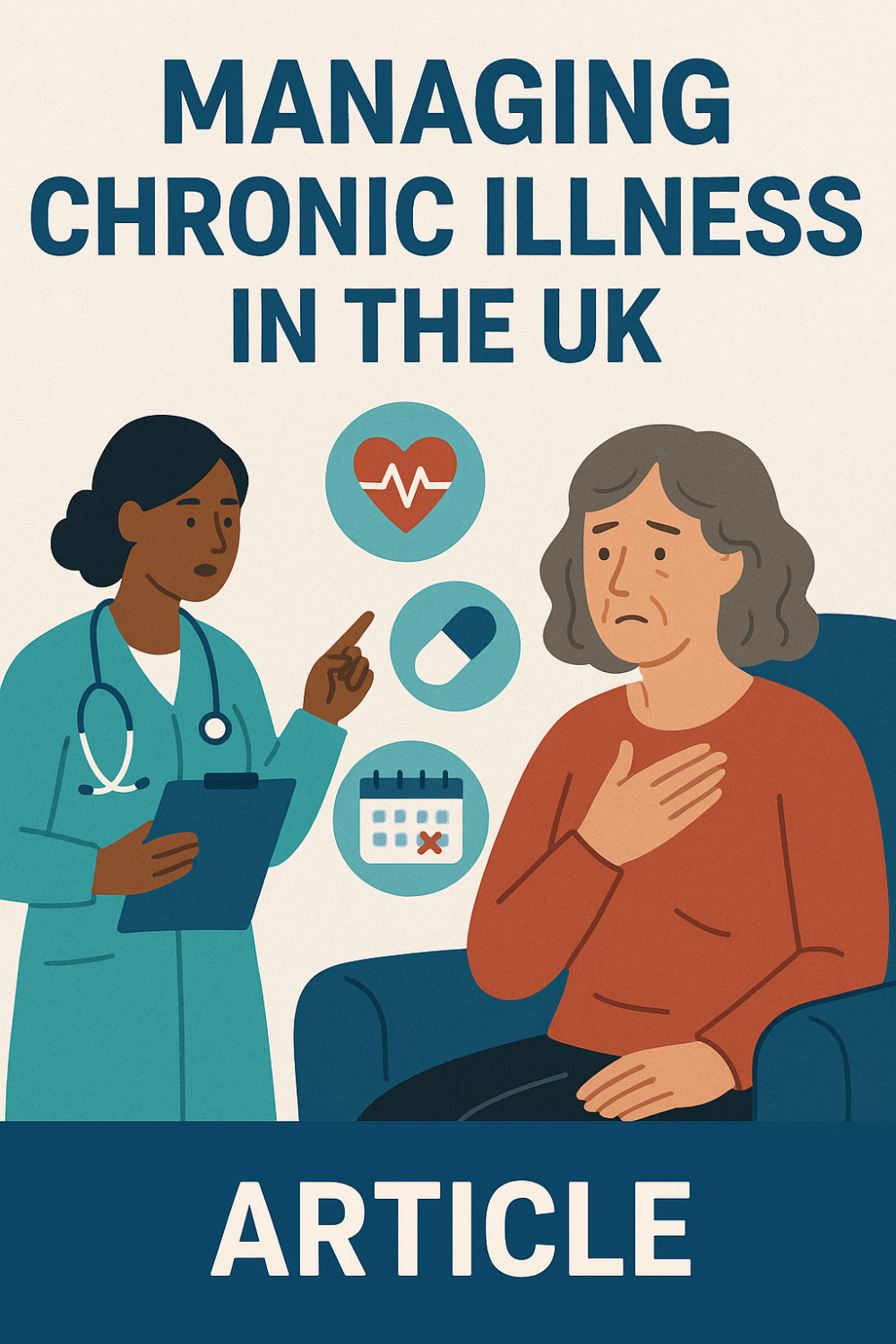Retirement Property Nightmare: 12 Lifesaving Solutions to Avoid Running Out of Money & Living in Fear After 55
The Retirement Property Trap – And How to Escape It!
Imagine this: You’re 55, 65, or even 75. You’ve worked hard. You’ve saved. But now, you’re staring at a terrifying question—where should I live for the rest of my life, and how do I make sure I don’t run out of money?
The wrong decision could wipe out your wealth. The right one could secure your future—and even leave an inheritance.
What is the right path to your financial security in UK?
Unlock Your Dream Retirement Property in England!
Struggling to decide whether to rent or buy after 55? Worried about outliving your savings or making a bad investment? Our groundbreaking ebook, Retirement Property Nightmare: 12 Lifesaving Solutions,”reveals how to:




Packed with step-by-step plans, tax strategies, and real case studies, this guide is your roadmap to a secure, prosperous retirement.

#RetirementProperty #Over55Finance #UKPropertyInvesting #LaterLifePlanning #PropertyOrPension
Here’s the brutal truth: England’s property market is a minefield for over-55s. Should you buy? Rent? Downsize? Move abroad? Invest elsewhere? No one gives you a straight answer. And the clock is ticking.
- 40% of retirees worry about outliving their savings (Pensions and Lifetime Savings Association).
- 1 in 5 over-55s regret their housing decisions in retirement (Legal & General).
- Rising rents, care costs, and inflation are eroding financial security.
This isn’t just about bricks and mortar. It’s about freedom, safety, and prosperity.
This e-book cuts through the noise. No jargon. No fluff. Just 12 powerful, practical solutions—each explained in detail—to help you:



This isn’t theory. It’s actionable intelligence—for professionals, business leaders, and anyone who refuses to let retirement become a financial disaster.
Ready to take control? Let’s dive in.
The 12 Solutions (Expanded in Full E-book)
1. Rent & Invest: The “No Mortgage, More Wealth” Strategy
- Why renting frees up capital for higher-return investments.
- How to calculate if renting + investing beats buying outright.
2. Lifetime Leases: Secure a Home Without the Full Cost
- How “lifetime lease” schemes work (e.g., Age UK’s model).
- Pros, cons, and financial implications.
3. Equity Release… But Smarter
- When it makes sense—and when it’s dangerous.
- Alternative ways to access home equity without high-risk loans.
4. Downsizing to a Forever Home
- How to pick a property that adapts as you age.
- Hidden costs of moving—and how to minimise them.
5. Co-Living for Over-55s: Community & Cost Savings
- Shared housing models that slash living costs.
- Legal structures to protect your investment.
6. Buy-to-Let as a Pension Supplement
- How to generate rental income without becoming a full-time landlord.
- Tax-efficient structures for property investments.
7. Commercial Property REITs: High-Yield, Hands-Off
- Why REITs (Real Estate Investment Trusts) could beat residential rentals.
- Best-performing UK REITs for steady income.
8. Crypto & Stocks: The “Small Stake, Big Potential” Play
- How to allocate 5-15% of capital for growth without reckless risk.
- Safe ways to invest in crypto (e.g., ETFs, staking).
9. The Hybrid Model: Part-Own, Part-Rent, Part-Invest
- Combining strategies for maximum flexibility.
- Case study: A 62-year-old who cut living costs by 30% and grew wealth.
10. Moving Abroad—The Safe Way
- Best countries for healthcare, low costs, and expat communities.
- How to trial a move before committing.
11. Retirement Villages vs. Standard Housing
- Are they worth the premium? Hidden fees exposed.
- Top-rated UK retirement villages—and ones to avoid.
12. The “Future-Proofing” Checklist
- 10 questions to ask before making any decision.
- Red flags that signal a bad investment.
Conclusion: Your Next Step
The worst thing you can do? Nothing. Indecision costs money—and peace of mind.
Pick one solution to explore first. Test it. Adapt it. Then take control.
Your retirement should be about freedom—not fear. Let’s make it happen.
Solution 1: Rent & Invest – The “No Mortgage, More Wealth” Strategy
Why It Works:
Many over-55s assume homeownership is always better. But renting can free up capital for higher-return investments—while avoiding property maintenance costs, stamp duty, and market downturns.
This strategy is ideal if:


Step-by-Step Plan
Step 1: Calculate Your Financial Position
- Compare renting vs. buying costs in your desired area (use online calculators like MoneySuperMarket).
- Example: If a £300K home costs £1,200/month in rent but £1,800/month in mortgage + bills + upkeep, renting could save £600/month.
Step 2: Invest the Freed-Up Capital Wisely
Instead of tying up £300K in a home, consider:
- 60% in low-risk income generators (e.g., dividend stocks, REITs, corporate bonds).
- 30% in growth assets (e.g., global index funds, crypto ETFs).
- 10% in cash (emergency fund).
Step 3: Optimise for Tax Efficiency
- Use ISAs (£20K/year tax-free allowance).
- Maximize pension contributions (tax relief on contributions).
- Capital Gains Tax (CGT) allowance (£3,000/year as of 2024).
- Spread investments across spouses to double allowances.
Step 4: Monitor & Adjust
- Review annually—rebalance if one asset class booms.
- Adjust rent vs. investment returns—if rents spike, reconsider buying.
Taxation Strategy
| Investment | Tax Consideration | How to Reduce Tax |
|---|---|---|
| Stocks & Shares | Dividends taxed over £1,000/year (basic rate) | Hold in an ISA/SIPP (tax-free). |
| Crypto | CGT applies on profits over £3,000/year | Use bed-and-ISA to reset tax-free limits. |
| Rental Income | Income tax if you later buy a BTL | Set up a limited company (lower corp tax). |
| REITs | Dividends taxed but with 20% tax credit | Hold in an ISA for zero tax. |
Case Study: Margaret, 62 – From Homeowner to Wealth Builder
Background:
- Sold her £400K London flat (owned outright).
- Moved to a £1,200/month rental in Brighton.
Strategy:
- Invested £350K (after costs):
- £210K in a global ETF (avg. 7% return = £14.7K/year).
- £105K in a property REIT (5% yield = £5.25K/year).
- £35K in Bitcoin ETF (long-term hedge).
- Tax Efficiency:
- All investments in ISAs/SIPPs (no tax on gains).
- Used her CGT allowance when rebalancing.
Result After 5 Years:
- Investments grew to ~£470K (despite market dips).
- Rent stayed stable, while local house prices rose just 2%/year.
- Passive income = £19.95K/year (covering 70% of rent).
Key Takeaway:
By renting, Margaret kept her capital liquid, earned higher returns, and avoided property headaches—all while legally minimizing tax.
Potential Risks & Mitigations
- Rent Increases: Fix long-term leases or negotiate caps.
- Investment Volatility: Diversify across asset classes.
- Longevity Risk: Pair with an annuity or dividend portfolio.
Next Steps:
- Run your own rent-vs-buy numbers (try this calculator).
- Speak to a fee-only financial adviser (unbiased.co.uk).
Solution 2: Lifetime Leases – Secure a Home for Life Without the Full Cost of Ownership
Why It Works
Many over-55s want stability without the financial burden of buying a property outright. A lifetime lease (also called “home for life” or “older person’s shared ownership”) allows you to:



This is ideal if:


Step-by-Step Plan
Step 1: Understand How Lifetime Leases Work
- You pay a one-off lump sum (typically 30-60% of market value) for the right to live in the property until death.
- No monthly rent (or sometimes a small service charge).
- The property reverts to the provider when you pass away or move into care.
Step 2: Find a Reputable Provider
- Housing Associations (e.g., Anchor Hanover)
- Private Schemes (e.g., Homewise)
- Charities (e.g., Age UK)
Check:


Step 3: Calculate the Financial Impact
- Compare the lump sum cost vs. buying outright or renting long-term.
- Example:
- Market value: £300,000
- Lifetime lease cost: £150,000 (50%)
- Savings vs. buying: £150,000 freed up for investments
Step 4: Invest the Freed-Up Capital
- Low-risk income: Bonds, dividend stocks, REITs.
- Growth assets: Index funds, crypto (small %).
- Tax-efficient wrappers: ISAs, SIPPs.
Step 5: Review Annually
- Track investment performance.
- Adjust strategy if lease terms change.
Taxation Strategy
| Aspect | Tax Consideration | Optimisation Tip |
|---|---|---|
| Lump Sum Payment | No stamp duty (not a purchase). | N/A |
| Investment Gains | CGT on profits over £3,000/year. | Use ISAs (£20K/year tax-free). |
| Rental Income | If you later buy a BTL, income tax applies. | Consider a limited company (lower tax). |
| Inheritance | Property reverts to provider (no IHT). | Redirect wealth via gifts/trusts. |
Case Study: John, 68 – From Mortgage Stress to Financial Freedom
Background
- Owned a £350K house in Manchester (with £100K mortgage).
- Worried about maintenance costs and running out of cash.
Solution
- Sold his house (cleared mortgage, £250K left).
- Bought a lifetime lease (£120K for a 2-bed bungalow).
- Invested the remaining £130K:
- £80K in a global index fund (7% avg return).
- £30K in a property REIT (5% yield).
- £20K in gold/crypto (hedge against inflation).
Results After 4 Years




Key Takeaway
John secured a home for life while growing his wealth—without property market risks.
Potential Risks & Mitigations
- Early Exit? Some schemes allow transfers (check terms).
- Inflation Risk? Fixed service charges help.
- Care Needs? Some providers allow moving to assisted living.
Next Steps
- Compare lifetime lease providers (Homewise, Anchor).
- Run your own numbers (use this calculator).
- Consult a retirement specialist (unbiased.co.uk).
Solution 3: Smart Equity Release – Unlock Cash Without Losing Your Home (Or Your Future Security)
Why This Works
Many over-55s are house-rich but cash-poor—sitting on property wealth but struggling with daily expenses. Traditional equity release can be risky, but newer, smarter strategies allow you to:



Best for:


Step-by-Step Plan
Step 1: Check Eligibility
- You must be 55+ (some lenders require 60+).
- Property value ≥ £70K (UK average minimum).
- No major mortgage (must be repaid on release).
Step 2: Choose the Right Product
| Type | How It Works | Best For |
|---|---|---|
| Lifetime Mortgage | Tax-free lump sum, repaid when you die/move. | Those who won’t move and want simplicity. |
| Home Reversion | Sell a % of your home for cash (lower value). | If you prioritize cash now over inheritance. |
| Drawdown Mortgage | Access funds as needed (lower interest). | Flexible needs (e.g., care costs later). |
Step 3: Compare Lenders
- Major providers: Aviva, Legal & General, More2Life.
- Key checks:
Fixed vs. variable interest rates (avoid compounding debt).
“No negative equity” guarantee (you’ll never owe more than the house value).
Early repayment charges (if you downsize later).
Step 4: Reinvest Strategically
- Goal: Earn higher returns than the loan interest (~5-6% APR).
- Example allocation:
- 40% dividend stocks (5-7% yield, ISA-protected).
- 30% property REITs (stable income, no landlord hassle).
- 20% annuities/bonds (safe cash flow).
- 10% crypto/growth ETFs (hedge against inflation).
Step 5: Monitor & Adjust
- Annual review: Track investment growth vs. loan roll-up.
- Exit strategy: Plan for downsizing if rates rise sharply.
Taxation Strategy
| Aspect | Tax Consideration | Optimisation Tip |
|---|---|---|
| Lump Sum Received | Tax-free (not income). | N/A |
| Investment Growth | CGT on profits >£3K/year (2024). | Use ISAs (£20K/year allowance). |
| Rental Income | If reinvested in BTLs, income tax applies. | Hold in a limited company (19% corp tax). |
| Inheritance Tax (IHT) | Equity release reduces estate value. | Combine with gifts/trusts for heirs. |
Case Study: Susan, 72 – From Cash-Strapped to Comfortable
Background
- Owned a £500K home in Bristol (mortgage-free).
- Pension income tight (£12K/year).
- Wanted to travel & help grandchildren but lacked cash.
Solution
- Took a £150K lifetime mortgage (fixed 5.8% APR, no repayments).
- Invested £120K:
- £60K in FTSE 100 dividend stocks (avg. 6% yield = £3.6K/year).
- £40K in property REITs (5% yield = £2K/year).
- £20K in gold ETF (inflation hedge).
- Kept £30K as emergency cash.
Results After 3 Years




Key Takeaway
Susan unlocked her home’s value while growing wealth—without selling up or risking her future.
Potential Risks & Mitigations
| Risk | Solution |
|---|---|
| Compound interest | Choose fixed rates (not variable). |
| Inheritance reduced | Opt for a protected guarantee (e.g., 50%). |
| Investment losses | Diversify (avoid putting all cash in 1 asset). |
Next Steps
- Get a free equity release quote (MoneyHelper).
- Speak to a specialist adviser (FCA-regulated).
- Run your own numbers (try this calculator).
Solution 4: Downsizing to a “Forever Home” – Right-Size Your Property & Unlock Tax-Efficient Wealth
Why This Works
Many over-55s live in larger homes they no longer need, tying up capital in unused space. Downsizing can:



Best for:


Step-by-Step Plan
Step 1: Calculate Your Potential Profit
- Check your home’s value (Zoopla, local estate agents).
- Subtract:
- Estate agent fees (1-3%).
- Stamp duty on new purchase (lower for downsizers).
- Moving costs (£1K-£5K).
- Example:
- Sell £600K family home → buy £400K bungalow
- Freed-up cash: £180K (after fees & stamp duty)
Step 2: Choose Your “Forever Home” Wisely
| Option | Pros | Cons |
|---|---|---|
| Bungalow | No stairs, aging-friendly. | Premium price in some areas. |
| Retirement Flat | Low maintenance, social life. | Service charges, resale restrictions. |
| Smaller House | More freedom, no age rules. | Still some upkeep. |
| Relocation | Cheaper areas = more freed cash (e.g., North). | Leaving familiar community. |
Step 3: Optimise the Sale & Purchase
- Sell first to avoid chain stress.
- Negotiate stamp duty savings (no tax on first £250K if replacing main home).
- Consider leasehold vs. freehold (retirement properties often leasehold).
Step 4: Invest the Freed Capital
- Safe Income (40%): Bonds, annuities, premium bonds.
- Growth (40%): Global ETFs, REITs, fractional property.
- Alternative (20%): Crypto (5%), gold, peer-to-peer lending.
Step 5: Future-Proof Your Plan
- Install lifetime-friendly features (walk-in shower, grab rails).
- Review investments annually—adjust for inflation.
Taxation Strategy
| Aspect | Tax Consideration | Optimisation Tip |
|---|---|---|
| Home Sale Profit | No CGT (main residence relief). | N/A |
| New Home Stamp Duty | £0-12% (over £250K). | Buy under £250K if possible. |
| Investment Gains | CGT on profits >£3K/year. | Use ISAs (£20K/year allowance). |
| Rental Income | Taxable if buying BTLs. | Hold in a limited company (19% corp tax). |
| Inheritance Tax | Downsizing can reduce estate value. | Gift £3K/year tax-free to heirs. |
Case Study: David & Linda, 68 & 65 – From Empty Nest to Tax-Free Wealth
Background
- Owned a £750K 4-bed in Surrey (mortgage-free).
- Only used 2 rooms, spent £4K/year on upkeep.
- Wanted to travel & help grandchildren financially.
Solution
- Sold for £735K (after fees).
- Bought £425K bungalow in Dorset (stamp duty: £8,750).
- Freed-up £300K+:
- £150K in global index funds (avg. 7% return).
- £100K in holiday let (8% yield, Ltd Company).
- £50K in gold/crypto (hedge).
Results After 5 Years




Key Takeaway
Downsizing gave them more cash, less work, and total flexibility—without sacrificing comfort.
Potential Risks & Mitigations
| Risk | Solution |
|---|---|
| Buyer delays | Sell first, rent short-term if needed. |
| New home regrets | Rent in area first (1-3 months). |
| Investment dips | Diversify (don’t put all cash in 1 asset). |
Next Steps
- Estimate your home’s value (Zoopla).
- Compare retirement properties (Retirement Villages).
- Speak to a downsizing adviser (The Downsizing Company).
Solution 5: Co-Living for Over-55s – Slash Costs, Boost Community & Free Up Cash
Why This Works
Many over-55s face loneliness or financial strain in traditional housing. Co-living offers:



Best for:


Step-by-Step Plan
Step 1: Choose Your Co-Living Model
| Type | How It Works | Cost Savings |
|---|---|---|
| Shared House | Rent a room in a house with peers. | £500-£800/month (vs. £1,200+ solo). |
| Co-Housing Community | Private homes + shared spaces (gardens, kitchens). | £150K-£400K buy-in (cheaper than a full house). |
| Retirement Co-Living | Age-restricted, with care options. | £1,000-£2,500/month (all-inclusive). |
Step 2: Find a Reputable Scheme
- UK Platforms:
- The House Project (London-focused).
- Older Women’s Co-Housing (female-only).
- Happipad (intergenerational).
- Checks:
Contract flexibility (can you leave with notice?).
House rules (guests, noise, chores).
Included costs (bills, cleaning?).
Step 3: Calculate Your Financial Gain
- Example:
- Sell £400K home → buy into £200K co-housing share.
- Freed-up £200K to invest.
- Save £6K/year vs. solo living (bills, council tax).
Step 4: Reinvest Freed Capital
- Low-Risk (50%): Bonds, dividend stocks.
- Growth (30%): ETFs, REITs.
- Alternative (20%): Crypto (5%), peer-to-peer lending.
Step 5: Integrate & Enjoy
- Join social events to build connections.
- Adjust investments annually.
Taxation Strategy
| Aspect | Tax Consideration | Optimisation Tip |
|---|---|---|
| Home Sale Profit | No CGT (main residence relief). | N/A |
| Co-Housing Purchase | Stamp duty may apply (if buying a share). | Buy under £250K to avoid tax. |
| Investment Gains | CGT on profits >£3K/year. | Use ISAs (£20K/year allowance). |
| Rental Income | If investing in BTLs, income tax applies. | Hold in a limited company (19% corp tax). |
Case Study: Margaret, 70 – From Lonely to Thriving
Background
- Widow in a £350K 3-bed (too big, isolating).
- Spent £1,400/month on upkeep/bills.
Solution
- Sold home, bought into a £180K co-housing flat (Norfolk).
- Invested £170K freed cash:
- £80K in dividend stocks (£4K/year income).
- £50K in holiday let (Ltd Co, 6% yield).
- £40K in cash/gold (safety net).
- Now pays £800/month all-in (vs. £1,400+ before).
Results After 3 Years




Key Takeaway
Co-living gave Margaret financial security + a vibrant community—without sacrificing independence.
Potential Risks & Mitigations
| Risk | Solution |
|---|---|
| Personality clashes | Trial a short stay before committing. |
| Scheme failure | Choose FCA-regulated providers. |
| Investment dips | Keep 1-2 years’ expenses in cash. |
Next Steps
- Explore co-living options (UK Cohousing Network).
- Calculate your savings (try this calculator).
- Speak to a retirement adviser (Unbiased).
Want help finding a co-living community near you?
Solution 6: Buy-to-Let as a Pension Supplement – Generate Passive Income Without the Full-Time Landlord Hassle
Why This Works
For over-55s with capital, buy-to-let (BTL) offers:



Best for:


Step-by-Step Plan
Step 1: Assess Your Finances
- Check mortgage eligibility (even if buying cash)
- Calculate target yield (aim for 5-8% after costs)
- Research locations (university towns often stable)
Step 2: Choose Your BTL Strategy
| Strategy | Pros | Cons |
|---|---|---|
| Standard BTL | Simple, predictable | Tenant turnover, maintenance |
| HMO (House Share) | Higher yields (8-12%) | More regulation, management |
| Holiday Let | Higher daily rates | Seasonal voids, more work |
| Rent-to-Rent | No property ownership needed | Lower margins, legal complexity |
Step 3: Purchase & Set Up
- Get specialist BTL mortgage (rates ~5-7% in 2024)
- Form a limited company if owning multiple properties
- Use a letting agent (8-12% fee) if hands-off
- Set up landlord insurance (£200-500/year)
Step 4: Optimize Operations
- Automate rent collection (OpenRent, PayProp)
- Schedule annual inspections
- Build a maintenance fund (1-2% property value/year)
Step 5: Reinvest Profits
- Pay down mortgage for better cashflow
- Diversify into REITs for passive exposure
- Top up pension for tax relief
Taxation Strategy
| Aspect | Tax Consideration | Optimisation Tip |
|---|---|---|
| Rental Income | Taxed as income (20-45%) | Offset mortgage interest (20% tax credit) |
| Capital Gains | 18-28% when selling | Use annual £3K CGT allowance |
| Inheritance Tax | Property forms part of estate | Consider transferring to trust |
| Limited Company | 19% corporation tax (vs 20-45% income tax) | Better for higher-rate taxpayers |
Case Study: Robert, 62 – From Teacher to Property Investor
Background
- Retired teacher with £80K pension lump sum
- Owned home outright (value £350K)
- Wanted £1,500/month extra income
Solution
- Bought 2 BTL properties in Manchester:
- £150K 2-bed flat (mortgage: £75K at 5.5%)
- £180K 3-bed terrace (cash purchase)
- Set up as limited company:
- £1,650/month rent after costs
- £800/month profit after tax
- Reinvested profits:
- Paid down mortgage faster
- Bought REITs for diversification
Results After 4 Years




Key Takeaway
Robert created a stable second income while building long-term wealth – without becoming a full-time landlord.
Potential Risks & Mitigations
| Risk | Solution |
|---|---|
| Void periods | Keep 6 months’ mortgage in cash reserve |
| Problem tenants | Use thorough referencing (HomeLet, OpenRent) |
| Interest rate rises | Fix mortgage for 5+ years |
| Regulation changes | Join NRLA for updates |
Next Steps
- Check mortgage eligibility (Landlord Mortgages)
- Calculate projected returns (Property Investment Calculator)
- Consult a tax adviser about limited company setup
Want help finding high-yield BTL locations? Ask for my UK hotspot list!
Solution 7: Commercial Property REITs – High-Yield, Hands-Off Property Investing
Why This Works
For over-55s wanting property exposure without landlord hassles, Real Estate Investment Trusts (REITs) offer:



Best for:


Step-by-Step Plan
Step 1: Understand REIT Types
| REIT Type | Characteristics | UK Examples |
|---|---|---|
| Retail | Shopping centers, outlets | British Land, Landsec |
| Office | City commercial buildings | Great Portland Estates |
| Industrial | Warehouses, logistics | Segro, Tritax Big Box |
| Healthcare | Hospitals, care homes | Primary Health Properties |
| Mixed-Use | Combination of above | Unite Group (student housing) |
Step 2: Open Investment Account
- ISA/SIPP (for tax-free growth)
- Trading platform (e.g., Hargreaves Lansdown, AJ Bell)
- Set up dividend reinvestment (compound growth)
Step 3: Build Your REIT Portfolio
- Core (60%): Stable, blue-chip REITs (e.g., Segro)
- Growth (30%): Specialized sectors (e.g., data centers)
- High-Yield (10%): Riskier but >8% yield (e.g., regional retail)
Step 4: Monitor & Rebalance
- Quarterly: Check occupancy rates/dividend health
- Annually: Rebalance across sectors
- Exit strategy: Sell if yields drop below 4%
Taxation Strategy
| Aspect | Tax Treatment | Optimisation Tip |
|---|---|---|
| Dividends | Taxable over £1,000/year | Hold in ISA (£20K/year tax-free) |
| Capital Gains | 10-20% CGT over £3,000 allowance | Bed-and-ISA strategy |
| SIPP Holding | Tax-free growth | Withdraw 25% tax-free at 55+ |
| Foreign REITs | Withholding tax may apply | Stick to UK REITs for simplicity |
Case Study: Patricia, 68 – From Landlord to Passive Investor
Background
- Former landlord (2 BTL flats)
- Tired of tenant issues/maintenance
- Had £120K from flat sales
Solution
- Sold BTLs, invested £100K in REITs:
- 40% Industrial (Segro, Tritax)
- 30% Healthcare (Primary Health)
- 20% Retail (British Land)
- 10% Cash (opportunity fund)
- Held in ISA (£20K/year over 5 years)
Results After 3 Years




Key Takeaway
Patricia replaced active landlording with higher, stress-free yields while maintaining property exposure.
Potential Risks & Mitigations
| Risk | Solution |
|---|---|
| Sector downturn | Diversify across 3+ property types |
| Dividend cuts | Focus on REITs with 5+ year payout history |
| Interest rate rises | Favor REITs with long-term leases (e.g., NHS healthcare) |
| Liquidity crunch | Keep 5% in cash REITs (e.g., Warehouse REIT) |
Next Steps
- Research top UK REITs (AIC REIT sector)
- Open tax-efficient account (ISA/SIPP)
- Start with £5K-£10K test investment
Want my curated list of 2024’s highest-yielding REITs? Ask!
Solution 8: The “5% Crypto & Growth Stocks” Hedge – High-Potential Assets to Boost Retirement Income
Why This Works
For over-55s willing to allocate a small portion of capital to growth assets:



Best for:


Step-by-Step Plan
Step 1: Determine Your Risk Allocation
| Risk Profile | Suggested Allocation | Asset Mix |
|---|---|---|
| Conservative | 5% of portfolio | 3% Bitcoin, 2% Blue-chip tech |
| Balanced | 10% of portfolio | 5% Crypto, 5% Growth ETFs |
| Aggressive | 15% of portfolio | 7% Altcoins, 8% AI stocks |
Step 2: Choose Your Platform
| Asset Type | Recommended Platforms | Fees |
|---|---|---|
| Cryptocurrency | Coinbase, Kraken, eToro | 0.1-1.5% |
| Stocks/ETFs | Interactive Investor, Hargreaves Lansdown | £3-12/trade |
| Crypto ETFs | InvestEngine (UK-compliant) | 0.25-0.99% MER |
Step 3: Build Your Growth Portfolio
A) Crypto Core (60% of allocation):
- 40% Bitcoin (digital gold)
- 30% Ethereum (smart contracts)
- 20% Solana/Chainlink (high-growth)
- 10% Stablecoins (earning 5% yield)
B) Stock Growth (40% of allocation):
- 50% Nasdaq 100 ETF (QQQ)
- 30% AI stocks (Nvidia, Microsoft)
- 20% Dividend-growth (Apple, Visa)
Step 4: Implement Safety Measures
- Hardware wallet (Ledger/Trezor) for crypto
- Stop-loss orders at 20-30% below entry
- Take-profit levels (e.g., sell 25% at 100% gain)
- Rebalance quarterly back to target %
Step 5: Tax-Optimized Withdrawals
- Harvest gains within CGT allowance (£3,000/year)
- Use Bed-and-ISA transfers annually
- Offset losses against gains
Taxation Strategy
| Asset | UK Tax Treatment | Optimisation Tip |
|---|---|---|
| Cryptocurrency | CGT over £3K gains/year | Spread sales across tax years |
| Stocks | CGT over £3K, dividends taxed | Hold growth stocks in ISA |
| Crypto ETFs | Same as stocks (no direct crypto tax complexity) | Prefer for simplicity |
| Staking Rewards | Income tax (20-45%) | Use ISA-wrapped products |
Case Study: Derek, 63 – From Cash to 92% Gains
Background
- Had £250K portfolio (100% property/bonds)
- Frustrated with 1-3% returns
- Willing to risk £12.5K (5%) on growth
Solution
- Allocated £12.5K:
- £5K Bitcoin (bought at £18K, now £35K)
- £3K Nvidia (bought at $220, now $900)
- £2.5K AI ETF (ARKQ)
- £2K Ethereum
- Held in ISA (except crypto)
- Took 50% profits after 18 months
Results After 2 Years




Key Takeaway
A small, managed risk allocation supercharged Derek’s returns without jeopardizing his core wealth.
Potential Risks & Mitigations
| Risk | Solution |
|---|---|
| Crypto volatility | Never invest more than you can afford to lose |
| Platform failure | Use FCA-regulated brokers |
| Tax complexity | Use crypto ETFs instead of direct ownership |
| Scams/hacks | Cold storage for crypto, enable 2FA |
Next Steps
- Start small (£500-£1K test investment)
- Choose tax wrapper (ISA first, then taxable)
- Set up price alerts (TradingView, CoinMarketCap)
Want my 2024 watchlist of 5 high-conviction growth assets? Ask!
Solution 9: The Hybrid Model – Part-Own, Part-Rent, Part-Invest for Ultimate Flexibility
Why This Works
This innovative approach combines the best elements of ownership, renting, and investing to:



Best for:


Step-by-Step Hybrid Strategy Plan
Phase 1: Right-Size Your Housing
- Sell your large family home (if applicable)
- Buy a smaller property (50-70% of sale proceeds)
- Consider lifetime lease or shared ownership options
- Rent out part of your new property (e.g., spare room on Airbnb)
Example: Sell £600K home → Buy £350K flat → Rent out second bedroom for £800/month
Phase 2: Strategic Capital Allocation
| Bucket | % Allocation | Purpose | Example Investments |
|---|---|---|---|
| Core Housing | 40-60% | Reduced but stable housing | Small freehold/leasehold property |
| Income | 20-30% | Monthly cash flow | REITs, dividend stocks, BTL |
| Growth | 15-25% | Long-term appreciation | Global ETFs, crypto (5% max) |
| Liquidity | 5-10% | Emergency buffer | Premium bonds, cash ISA |
Phase 3: Implement Tax Efficiency
- Property
- Use private residence relief when selling main home
- Claim rent-a-room relief (£7,500/year tax-free)
- Investments
- Max out ISA allowances (£20K/year)
- Use pension contributions for tax relief
- Business Structure
- Consider limited company for BTL portion
Phase 4: Dynamic Management
- Quarterly: Review rental income vs. costs
- Annually: Rebalance investment portfolio
- Life Events: Adjust strategy for health changes, inheritance needs
Taxation Strategy Breakdown
| Component | Tax Consideration | Optimization Strategy |
|---|---|---|
| Home Sale | No CGT (main residence relief) | Time sale when property qualifies |
| Partial Rent | Rent-a-room scheme (£7.5K tax-free) | Stay under threshold or split ownership |
| Investment Income | Dividends taxed over £1K | Hold in ISA/SIPP |
| Capital Gains | £3K annual allowance | Bed-and-ISA transfers |
| Inheritance | Property forms part of estate | Gift assets gradually using allowances |
Case Study: The Thompson Family – From Stress to Smart Flexibility
Background
- Couple aged 64/62 in £800K 4-bed London house
- £1.2M net worth (including property)
- Worried about:
- High maintenance costs (£15K/year)
- Being “house rich, cash poor”
- Adult children needing inheritance
Hybrid Solution Implemented
- Housing Restructure:
- Sold main home (£800K)
- Bought £450K 2-bed flat in Brighton (mortgage-free)
- Rented out parking space (£150/month)
- Capital Deployment:
- £200K: Commercial property REIT (6% yield)
- £100K: Global dividend ETF (4% yield)
- £50K: Bitcoin/crypto (5% allocation)
- £100K: Cash buffer (premium bonds)
- Tax Strategy:
- Used both ISAs (£40K/year combined)
- Gifted £6K/year to children tax-free
2-Year Results





Key Insight
“By giving up some square footage, we gained financial freedom and options we never had when all our wealth was tied up in one property.”
Risk Management Framework
| Risk | Mitigation Strategy |
|---|---|
| Property value drop | Focus on location over size |
| Tenant issues | Use Airbnb for short-term, vetted rentals |
| Investment losses | Keep crypto <5%, rebalance regularly |
| Healthcare costs | Maintain £50K+ liquid buffer |
Getting Started Checklist
- Calculate your housing needs (try Lifetime Homes Calculator)
- Speak to a hybrid mortgage adviser (try London & Country)
- Test the rental market with one room before committing
Want a personalised hybrid model breakdown?
This approach turns the traditional “all-or-nothing” property decision into a tailored, flexible wealth-building system.
Solution 10: Strategic Overseas Relocation – Lower Costs, Better Lifestyle & Financial Security
Why This Works
Moving abroad can dramatically improve retirement finances by:



Best for:


Step-by-Step Relocation Plan
Phase 1: Choose Your Destination
Top 5 Retirement Havens (2024):
| Country | Avg Monthly Cost | Healthcare Quality | UK Pension Treatment | Visa Requirements |
|---|---|---|---|---|
| Portugal | £1,800 | Excellent (ranked #12 globally) | Frozen | D7 Visa (£1,270/month income) |
| Spain | £2,100 | Very Good (#19) | Frozen | Non-Lucrative Visa (£2,300/month) |
| Malaysia | £1,200 | Good (#49) | Frozen | MM2H (£3,500/month income) |
| Costa Rica | £1,500 | Good (#36) | Paid | Pensionado Visa (£1,000/month) |
| Cyprus | £1,900 | Good (#24) | Frozen | Category F (€30K deposit) |
Source: Numbeo 2024, WHO Healthcare Rankings
Phase 2: Financial Preparation
- Test the waters (3-month rental first)
- Structure assets tax-efficiently:
- Keep UK ISAs (tax-free growth)
- Open local bank account (avoid currency fees)
- Consider QROPS if transferring pensions
- Healthcare planning:
- S1 Form for UK state pensioners in EU
- International health insurance (~£200/month)
Phase 3: The Move
- Downsize UK property (rent out or sell)
- Ship essentials only (cost: £3-5K by sea)
- Establish tax residency (183+ day rule)
Phase 4: Ongoing Management
- File UK tax return if keeping UK property
- Review currency exposure annually
- Maintain UK ties (NHS access, voting rights)
Taxation Strategy
| Aspect | UK Treatment | Local Treatment | Optimization Tip |
|---|---|---|---|
| State Pension | Taxable | Often tax-free | Choose countries with DTA |
| Private Pension | 25% tax-free | Varies | Take lump sum pre-move |
| Rental Income | UK tax if property kept | Possible double taxation | Use Ltd Company |
| Capital Gains | £3K allowance | Often 0% for newcomers | Time asset sales |
DTA=Double Taxation Agreement. Portugal offers 10% flat tax on pensions under NHR scheme until 2024.
Case Study: The Harrisons – From Yorkshire to Algarve
Background
- Couple aged 68/65 with £1,800/month UK state pension
- £250K savings in UK property/bonds
- Struggling with £2,400/month UK costs
Relocation Strategy
- Sold £300K Yorkshire home (bought in 1990s)
- Purchased €250K 2-bed villa in Algarve (no mortgage)
- Financial Structure:
- £1,800 pension covers all living costs (vs £600 UK shortfall)
- €1,200/month surplus invested in local tourism business
- 10% NHR tax rate on pension until 2024
3-Year Results




Key Insight
“We gained financial breathing room and a better quality of life. Our money goes 3x further here.”
Risk Management
| Risk | Solution |
|---|---|
| Healthcare gaps | Secure S1 form or international insurance |
| Currency fluctuations | Keep 25% assets in GBP |
| Family separation | Budget for 2 UK trips/year |
| Political changes | Choose stable countries (OECD members) |
Next Steps
- Take the ‘Where Should I Retire?’ quiz (try International Living’s quiz)
- Consult expat financial advisers (try Blevins Franks)
- Join expat Facebook groups for real-world insights
Want my country-by-country tax comparison spreadsheet?
This solution turns geographic arbitrage into a powerful retirement optimisation tool.
Solution 11: Retirement Villages vs Standard Housing – The Smart Choice for Later Life
Why This Matters
Choosing between retirement communities and traditional housing is one of the most consequential decisions for over-55s. This solution provides:




Best for:


Step-by-Step Decision Framework
Phase 1: Understand Your Options
| Feature | Retirement Village | Standard Housing |
|---|---|---|
| Entry Cost | 70-90% market value + service charge | 100% market value |
| Monthly Fees | £300-£800 (covers maintenance, amenities) | Variable (owner responsible) |
| Healthcare Access | On-site care packages available | Must arrange privately |
| Social Life | Organized activities, communal spaces | Self-initiated |
| Appreciation | Typically 2-3% below market | Market-dependent |
| Exit Terms | Often 10-20% deferred management fee | Standard sale process |
Phase 2: Financial Comparison Tool
- Calculate 10-year total cost of ownership:
- Retirement village: (Purchase price × 0.8) + (monthly fees × 120) + exit fee
- Standard home: Purchase price + maintenance (1% of value/year) + care costs
- Example Scenario:
- £400K standard home vs £320K retirement property (80%)
- After 10 years:
- Retirement: £320K + (£500 × 120) + £64K (20% exit) = £444K
- Standard: £400K + (£40K maintenance) + £60K (care) = £500K
Phase 3: Lifestyle Assessment
- Take community trial stays (most offer 3-day visits)
- Interview current residents (ask about hidden frustrations)
- Test emergency call systems (response time audits)
Phase 4: Legal Due Diligence
- Review leasehold terms (typically 125-999 years)
- Understand fee escalation clauses (capped vs uncapped)
- Verify CQC ratings for on-site care providers
Taxation Strategy
| Consideration | Retirement Village | Standard Housing |
|---|---|---|
| Stamp Duty | Normal rates apply | Normal rates apply |
| Inheritance Tax | Included in estate | Included in estate |
| Care Fee Deductions | Possible if deemed healthcare-related | Only via complex trust structures |
| Capital Gains | No CGT on primary residence | No CGT on primary residence |
| Service Charges | Not tax-deductible | Not tax-deductible |
Key Tip: Some villages qualify for “extra care housing” status, making portions of fees eligible for tax relief.
Case Study: Margaret’s 5-Year Experiment
Background
- 72-year-old widow in £450K London terrace
- Increasing isolation and maintenance burden
- £25K/year pension + £100K savings
Test Period (2019-2024)
- Year 1-2: Rented out London home (£2,200/month), moved to rental in Dorset retirement community (£1,800/month all-in)
- Year 3: Bought £275K 2-bed apartment in village (30% below local market)
- Financial Outcome:
- London property: Appreciated to £500K, generated £52K rental income
- Village costs: £350/month service fee (covers gardening, security)
- Net position: £225K freed capital + £1,100/month positive cashflow
Key Findings




Risk Mitigation Guide
| Risk | Solution |
|---|---|
| Rising service charges | Choose providers with 5% annual cap |
| Resale difficulties | Opt for villages with buyback guarantees |
| Care quality issues | Select CQC-rated “Outstanding” communities |
| Buyer’s remorse | Negotiate 6-month trial period |
Action Plan
- Take the retirement community quiz: Try this 10-question assessment
- Request full fee breakdowns from 3 local providers
- Consult specialist solicitor (SPRING Law recommended)
- Run your personal numbers using this interactive calculator
Want my curated list of 12 questions to ask before buying?
This solution transforms a complex emotional decision into a structured financial and lifestyle optimisation process.
Solution 12: The Future-Proofing Checklist – 10 Critical Questions to Avoid Retirement Housing Regrets
Why This Solution Works
This comprehensive checklist helps over-55s:



Best for:


Step-by-Step Implementation Plan
Phase 1: The Core 10-Question Assessment
- Financial Longevity
“Can I afford this home if I live to 100?”
- Run 3 scenarios: best/average/worst case lifespan
- Include 3% annual inflation in cost projections
- Healthcare Readiness
“What care options exist within 1 mile?”
- Map local care homes (CQC ratings)
- Verify home adaptation grants available
- Exit Strategy
“How quickly could I sell if needed?”
- Check local market absorption rates
- Review any resale restrictions
- Tax Efficiency
“What’s the total 10-year tax burden?”
- Compare stamp duty vs capital gains exposure
- Model inheritance tax implications
- Family Impact
“Does this work for visiting grandchildren?”
- Test guest accommodation options
- Evaluate accessibility features
- Community Capital
“What’s the social ROI?”
- Count organized activities per month
- Interview 3 current residents
- Adaptability Score
“Can this home handle declining mobility?”
- Audit door widths/bathroom layouts
- Check smart home integration potential
- Crisis Resilience
“What happens if markets crash?”
- Stress test at 20% property value drop
- Identify contingency funding sources
- Legacy Planning
“How does this affect my estate?”
- Review trust compatibility
- Calculate probate timelines
- Joy Factor“Does this spark genuine excitement?”
- Conduct 24-hour test stays
- List 3 specific daily benefits
Phase 2: Scoring System
| Category | Weighting | Scoring (1-10) |
|---|---|---|
| Financial | 30% | ████████▮ 8.5 |
| Healthcare | 25% | █████▯ 5.0 |
| Lifestyle | 20% | ███████▯ 7.0 |
| Future-Proofing | 15% | ████████ 8.0 |
| Emotional | 10% | ███████▯ 7.5 |
Total Score: 7.4/10 (Good candidate for downsizing)
Phase 3: Decision Matrix
| Option | Financial | Healthcare | Lifestyle | Future | Emotional | Total |
|---|---|---|---|---|---|---|
| Retirement Village | 8.5 | 9.0 | 7.5 | 8.0 | 7.0 | 8.1 |
| Downsizing | 7.0 | 6.0 | 8.5 | 7.0 | 8.5 | 7.3 |
| Equity Release | 6.5 | 5.0 | 6.0 | 5.5 | 6.0 | 5.9 |
Tax Optimization Strategies
Ownership Structures Compared
| Structure | IHT Treatment | CGT Impact | Income Tax | Best For |
|---|---|---|---|---|
| Sole Ownership | 40% over £325K | PPR relief | Normal rates | Single retirees |
| Tenants in Common | 50% discount | Split gains | Split income | Couples |
| Lifetime Trust | Excluded after 7y | Market value at transfer | Trust rates | Wealth preservation |
PPR=Principal Private Residence relief
Actionable Tax Tips
- Use the £3K annual gift allowance to reduce estate value
- Time property sales to maximize CGT allowances
- Consider FHL status if keeping second home
Case Study: The Wilkinson Family Decision Process
Background
- Couple aged 69/67 with £1.2M net worth
- £800K 4-bed in Guildford
- Conflicted between 5 options
Checklist Application
- Scored all options using the 10 criteria
- Financial modeling revealed:
- Retirement village would preserve £200K more capital over 20 years
- Downsizing gave more flexibility but higher hidden costs
- Healthcare audit showed:
- Preferred village had on-site dementia care
- Standard home would require £60K in adaptations
12-Month Outcome




Key Insight
“The checklist exposed realities we’d ignored – like the true cost of stairlift installations and resale risks in our area.”
Risk Assessment Framework
| Risk Level | Indicators | Mitigation Strategies |
|---|---|---|
| Red | >3 categories scoring <4/10 | Reject option immediately |
| Amber | 2 categories <6/10 | Negotiate contract changes |
| Green | All categories >7/10 | Proceed with monitoring |
Implementation Tools
- Interactive Checklist Download our PDF scorer
- Video Tutorials See the system in action
- Professional Review Book a certified advisor
Want the full 50-point sub-question breakdown? Join our Retirement Club.
This solution brings institutional-grade decision rigour to personal retirement housing choices. However nothing in this ebook should be regarded as financial advice. Speak to your financial adviser for financial advice. All figures and comments are correct as at May 2025 so care should be taken to investigate figures after this date. Your own personal situation and decisions maybe based on these tips and guide but is not financial advice for you.
Join our Retirement Club
Protect and grow your business faster with CheeringUpInfo
Find out more about business growth with CheeringUpInfo Retirement Club Corporate Membership
Subscribe for free retirement lifestyle improvement tips reviews and money saving ideas
Connect with us for free retirement lifestyle improvement tips
Read more retirement lifestyle improvement articles and view videos for free
Connect with us for free retirement lifestyle improvement articles and videos
Read more :
1. Property Panic at 55? 12 Clever Ways to Secure Your Home & Wealth Before It’s Too Late
2. Retirement Roulette: How to Avoid the UK Property Traps That Wipe Out Your Savings
3. The Over-55s’ Housing Survival Guide: Own, Rent, or Invest Smarter—Without Running Out of Money
4. Stuck Between a Bricks-and-Mortar and a Hard Place? 12 Exit Strategies for a Richer Retirement
5. Later Life Lifeline: How to Hack UK Property, Investments & Renting So You Never Go Broke
Relevant Hashtags:
- #RetirementProperty
- #Over55Finance
- #UKPropertyInvesting
- #LaterLifePlanning
- #PropertyOrPension
Bonus Platform-Specific Hashtags:
- LinkedIn: #WealthManagement #RetirementSolutions
- Twitter/X: #UKHousingCrisis #GenXPlanning
- Facebook: #SilverSavvy #DownsizingUK
Later Life Lifeline: How to Hack UK Property, Investments & Renting So You Never Go Broke



